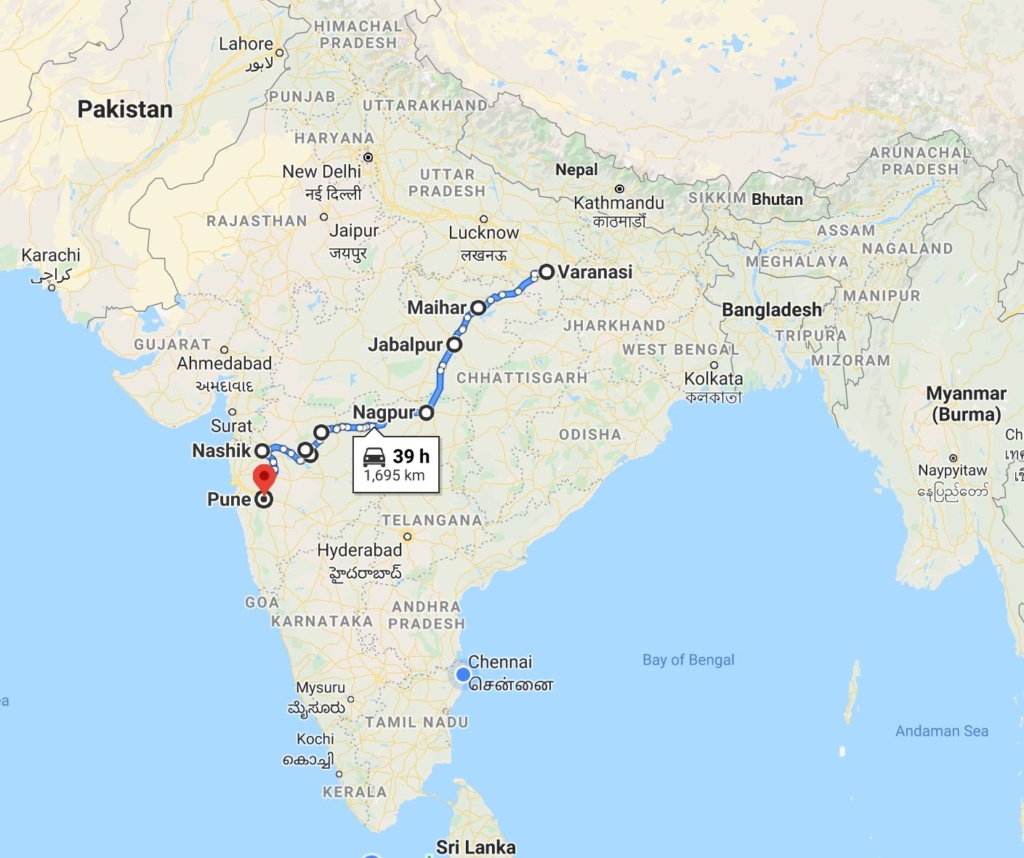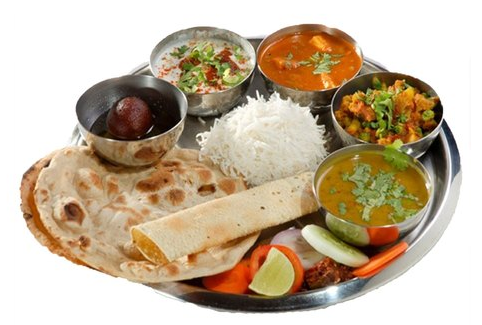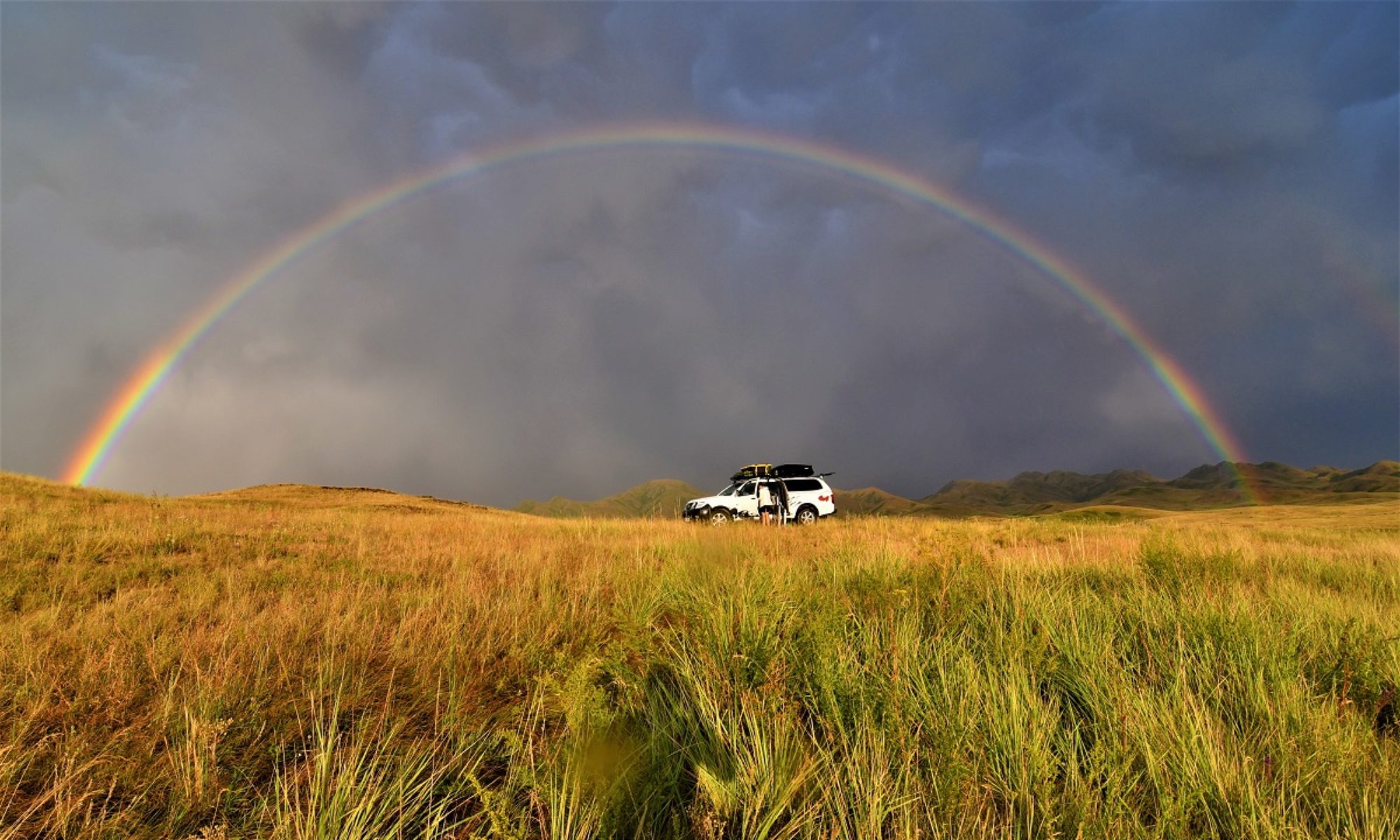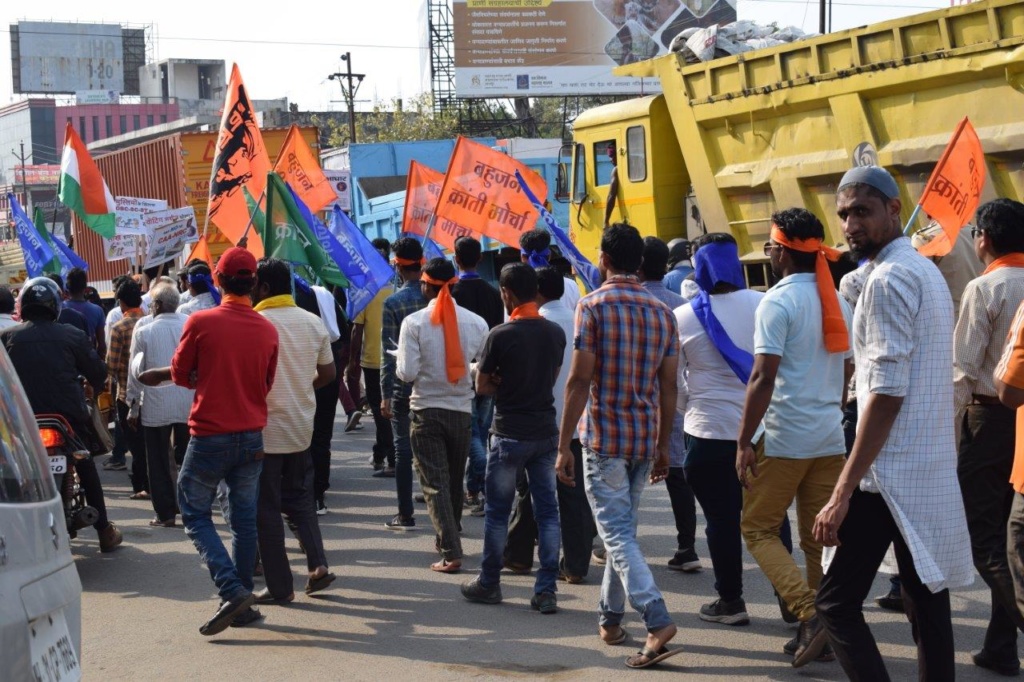
Monday 27th and Tuesday 28th January, 2020 – Maihar – Jabalpur
Twenty kilometres from Jabalpur we suddenly heard a bang and then a hissing noise when accelerating then a loss of power. We had no choice but to turn back and go to the nearest town, Jabalpur. There we stopped at a Nissan dealer, but the Navara (our truck model) is not sold in India and they could not source the part. They did a temporary fix to the air intake pipe and that seemed to improve the performance but it did not last. We stopped in town for the night and the receptionist at the hotel called some of his friends, auto enthusiasts, who took us to another garage. There the mechanics managed to repair the part to the best of his abilities. The performance improved but it is not back to normal. It means it is now difficult to pass lorries or other cars if we do not have momentum…. not great.
On the way we passed a few anti -CAA demonstrations. The Citizenship Amendment Act was passed by the Parlement of India in December. It provides a path to indian citizenship for illegal immigrants but exclude muslims hence the protests.
Wednesday 29th January, 2020 – Nagpur
We had high hopes that the Nissan dealer in Nagpur city could help but, in vain. We tried the Isuzu dealer as they sell pick-up models and they suggested we changed the fuel filter. We had a spare, they replaced it, syphoned out the tank which potentially contained “bad” diesel but then could not get the car to start and after several tries, had to put the old filter back in place. The staff and manager were most helpful and tried their best but, in the end, we were back to square one and had lost another 3 hours in the process.
Thursday 30th January, 2020 – Ajanta Caves
Despite the lack of performance from the car we managed to drive to the town close to Ajanta Caves. There, the only “decent” accommodation was a government run resort with individual chalets in an enclosed compound. To our surprise, as we were leaving for dinner we bumped into the uncle we had met in Varanasi ( sorry if you read this, I cannot remember your name…). He was there with a friend and we had drinks with them and another couple staying at the resort.Pleasant evening, we explained our troubles with the car and they volunteered to provide contacts in Pune.
Friday 31st January, 2020 – Ajanta Caves
Left early to be at the Caves entrance at the opening 9 a.m. A group of school children was already there but otherwise only few other tourists which means we more or less had the place to ourselves!
The Ajanta Caves constitute ancient monasteries and worship-halls of different Buddhist traditions carved into a 75-metre wall of rock. The caves also present paintings depicting the past lives and rebirths of the Buddha, pictorial tales from Aryasura’s Jatakamala, and rock-cut sculptures of Buddhist deities.
The caves include paintings and rock-cut sculptures described as among the finest surviving examples of ancient Indian art, particularly expressive paintings that present emotions through gesture, pose and form. The Ajanta Caves are mentioned in the memoirs of several medieval-era Chinese Buddhist travellers to India and by a Mughal-era official of Akbar era in the early 17th century. They were covered by jungle until accidentally “discovered” and brought to Western attention in 1819 by a colonial British officer Captain John Smith on a tiger-hunting party. ( ref Wikipedia)
The details and colours in the murals and the rock carving are really superb.
We spent a couple of hours exploring the site and then took the road to Ellora Caves, 100km away, stopping briefly at a market to buy some fresh fruit. The road was bad and three hours later we were finally there! This time, the site was busy with local tourists and a few westerners.
Ellora Caves
These 34 monasteries and temples, extending over more than 2 km, were dug side by side in the wall of a high basalt cliff, not far from Aurangabad, in Maharashtra. Ellora, with its uninterrupted sequence of monuments dating from A.D. 600 to 1000, brings the civilization of ancient India to life. Not only is the Ellora complex a unique artistic creation and a technological exploit but, with its sanctuaries devoted to Buddhism, Hinduism and Jainism, it illustrates the spirit of tolerance that was characteristic of ancient India. (source https://whc.unesco.org/ ).
The largest of the rock-cut temples is the Kailasa Temple, notable for its vertical excavation. The temple built by King Krishna I in AD 760 represents Mt Kailasa (Kailash), Shiva’s Himalayan abode. It is estimated that 200,000 tons of stone had to be chiselled out by hand by 7000 labourers. ( it would take around 200 days, working 24 hours per day, to excavate the entire site using contemporary technology). Covering twice the area of the Parthenon in Athens and being half as high again, Kailasa is an engineering marvel .
We stopped for the night in Aurangabad. There we had dinner in a restaurant serving “thali” exclusively. Thali (meaning “plate”) is used to refer to a meal made up of a selection of various dishes which are served on a platter.

The idea behind a thali is to offer all the 6 different flavours of sweet, salt, bitter, sour, astringent and spicy on one single plate. According to Indian food custom, a proper meal should be a perfect balance of all these six flavours. Dishes served in a thali vary from region to region, they can be vegetarian or non- vegetarian and are usually served in small bowls, called katori . These katoris are placed along the edge of the round tray. A thali begins with different types of breads such as puris or chapatis (rotis) ( especially in northern India). In many parts of India , the bread and the rice portions are not served together in the thali. Typically, the bread is offered first with rice being served afterwards, often in a separate bowl or dish. Typical dishes include rice, dal, vegetables, roti, papad, dahi (yogurt), small amounts of chutney or pickle, and a sweet dish to top it off.
There was no menu. the thali plates were already on the table and the waiters started to bring a selection of dishes for each katori as soon as we sat down. This was an un- limited thali, meaning that you get as many refills as you can eat. The portions may seem small but this is a very filling meal !
Saturday 1st February, 2020 – Nashik
We passed plenty of sugar cane plantations on the road to Nashik as well as cotton fields.
Paul’s wish to see a baraat ceremony ( wedding procession) was granted. We stopped by the side of the road where friends and family of the groom were happily dancing away to the sound of popular music blasted by a huge sound system from the back of a truck. The groom in his wedding attire was riding a white mare as is customary. Everyone seemed to have fun and we joined them for a while before the procession carried on its way to the bride’s house.
As we got closer to Nashik, many stalls were selling fresh grapes by the side of the road. The state of Maharashtra is India’s largest producer of grapes and Nashik also know as Wine Capital of India, leads the list of grape producing areas in India. Out of the total production of 1.2 million tons of table grapes, around 17–20% of the fresh produce is dried to raisins.
The wine industry is fairly recent ( late 1990’s) and Sula vineyards leads the way. Each year the company organises a SULAFEST (music and wine festival) and we happened to be there on that week-end! We only wanted to do some wine tasting so we drove on to another smaller winery called York Wineries. There, Paul tasted a couple of reds (quite strong) and I tried a white wine which was fruity and refreshing. We got talking to a young couple sitting at the table next to us and we spent a pleasant couple of hours watching the sun go down.
Sunday 2nd February, 2020 – Pune
The road to Pune was quite scenic in places but slow going. I had arranged to meet a friend and former colleague late afternoon and we got to Pune with time to spare. For once we had pre-booked a hotel, or at least tried as the Indian booking website kept rejecting our card. After some difficulties at reception (the online price was lower than what they were asking for but they would not take the online price cash equivalent), they accepted to let us move into the room and pay later (using my friend’s card !)
It was nice to catch up with Priyadarshani, her husband and meet their young daughter. When we went back together to the hotel, the manager was there and having heard we had been travelling for a year he quickly agreed to let us pay cash and even upgraded our room to a suite. He asked if we would agree to give a small interview to a local paper and we arranged to meet the journalists the next day.
Monday 3rd February, 2020
The following morning, the hotelier’s dad ( who happened to be the paper’s editor or board member?) and 2 journalists were waiting for us. After a small ceremony where we were blessed and presented with woolen shawls and flowers we sat down and answered a few questions about our trip. The hotelier’s children also came and wanted to practice their English. We were slightly taken aback when, as we were parting, they bent down and touched our feet. According to this Hindu tradition called Charan Sparsh (charan means ‘feet‘ and sparsh means ‘touch‘) when you touch the feet of an elder person, you are in turn blessed with knowledge, intellect, strength and fame.
We drove on to Vijapura, crossing some arid land but also areas where fruit trees and crops were growing. Cows in this region have huge horns in a U shape, sometimes painted during local religious festivals.

































































































